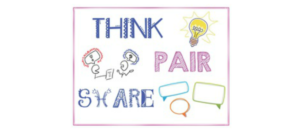
Multimedia is a very useful tool for presenting information or lessons. According to Dr. Ray Pastore’s video about multimedia learning principles, I realized his video did not use enough principles since he is explaining what the advantage and disadvantages base on those principles are. He did include three pictures, but he did not make the texts and pictures well balanced. His split attention theory is very weak in this video that using his face on the left screen is very distracting and hard to focus on his texts. Also, he did not do a good job on the redundancy principle. He did mention using both text and sound plus text and summary. However, he did not include that in his PowerPoint. Furthermore, about the heart picture that he did explain, it was very irrelevant information. He should use some picture examples base on his topic. Pictures and topic did not match can give misleading information (Ray Pastore, PH.D. Aug 2018).
People are using PowerPoint for teaching tools more often so in the classroom condition we like to make students or audiences more engage to our topic. Teachers or professors can use the split attention principle, redundancy principle, spatial & temporal contiguity, and signaling to make pictures and text on one page. The text should be short and have important words highlight on it. The teacher should explain the context or picture while he is talking. If students prefer to read by themselves, they can read the summary on the screen or if they prefer to listen they can listen to the prof and watch the picture.
Overall, if we combined all the elements that we had to learn from the video, we can make a full engagement art to help people to learn.
Reference:
-Ray Pastore, PH.D. (2018, Aug 16). What is Multimedia Learning? What is Multimedia? [ Video]. Youtube. https://www.youtube.com/watch?v=g-sknUVq1mk


Recent Comments